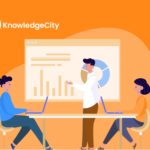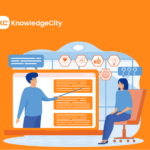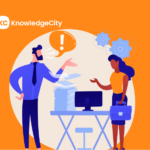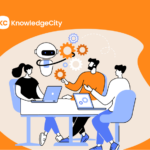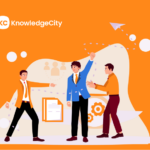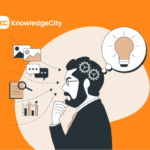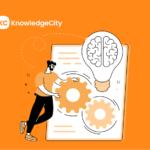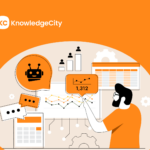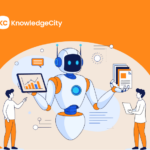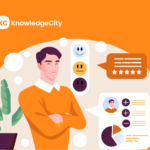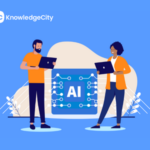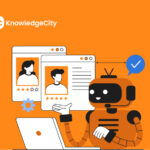Performance reviews have traditionally been a challenging process for both managers and employees. Time-consuming, subjective, and often disconnected from actual performance, many reviews fail to support growth or improve outcomes. Over the past two years, artificial intelligence has begun to reshape this critical HR function.
Between 2023 and 2025, a growing number of organizations across industries have adopted AI tools to modernize how performance is tracked, evaluated, and improved. For HR and L&D leaders, understanding how AI fits into performance reviews is essential not only to stay current with industry standards but to ensure fairness, accuracy, and ongoing development across teams.
This blog provides a comprehensive overview of AI’s current role in performance reviews. It highlights where AI adds value, what risks to watch for, and how HR professionals can use these tools responsibly and effectively.
Why Organizations Are Turning to AI for Performance Reviews
A recent study by UAB shows that traditional performance management systems often miss the mark. Employees frequently report that reviews lack fairness, clarity, and actionable feedback. For HR teams, gathering and evaluating performance data at scale remains a resource-intensive task. Managers, too, face challenges in writing reviews that are accurate, consistent, and timely.
This is where AI has gained traction. AI tools offer real-time performance data tracking, automated feedback analysis, goal alignment, and even assistance with review writing. The result is a system that feels more objective and provides actionable insights for both employees and leadership.
According to a study by McKinsey, organizations that use data-driven performance reviews see a significant reduction in bias and an increase in employee satisfaction.
What AI Does Well in Performance Reviews
Ask any HR or L&D leader what makes performance reviews difficult, and the answers are rarely about the form. It’s the gaps underneath. Incomplete context. Delayed feedback. Vague language. Missed growth signals. AI is starting to relieve that pressure, not by replacing managers, but by reinforcing the parts of the process that matter most.
Here’s how it’s solving the real problems teams face.
-
Reviews Are Often Built on Incomplete or Inconsistent Data
Managers rarely have the full picture. They’re expected to evaluate a year’s worth of performance, often based on a few standout moments or recent activity. That creates gaps, especially when feedback isn’t tracked regularly. AI fills this void by compiling performance activity across systems, OKRs, KPIs tracking tools, project management platforms, communication logs, and feedback surveys. This creates a timeline of actual contribution, available at the moment of review, without depending on memory.
-
Peer Feedback Is Collected but Not Used Effectively
360-degree reviews and peer input are valuable but often underutilized. Manually reviewing dozens of open-text responses is time-consuming, and the insights are frequently reduced to generic themes. AI changes this by analyzing qualitative feedback at scale, identifying recurring strengths, gaps, contradictions, or shifts in sentiment across time. This turns scattered feedback into structured insights that can actually inform performance discussions and development plans.
-
Managers Struggle to Write Useful Reviews
Not all managers are confident or skilled in giving written feedback. Some give overly vague comments, others copy templates, and some avoid difficult conversations entirely. This creates inconsistency across departments and can leave employees confused or disengaged. AI helps by providing structure, suggesting language that’s clear and constructive, and encouraging more balanced commentary. It helps ensure that every employee receives thoughtful feedback, regardless of their manager’s writing ability.
-
Bias Hides in Language and Scoring Patterns
Bias in performance reviews is often subtle. It shows up in tone, word choice, rating distributions, and the level of developmental feedback given. It’s difficult for HR to catch these issues without manually reviewing every document. AI brings visibility to patterns that would otherwise go unnoticed, whether certain groups consistently receive less actionable feedback, whether one team’s ratings are inflated, or whether language skews by gender or role. These insights help HR address issues early and improve equity across the process.
-
Review Cycles Are Slow and Operationally Exhausting
For many HR teams, performance review season means weeks of follow-ups, deadline reminders, formatting reviews, and chasing down missing feedback. It’s a heavy lift, and often overshadows the strategic purpose of the process. AI speeds up the operational side by streamlining workflows, pulling data, organizing input, prompting completion, and helping reviewers stay on track. This allows HR to shift attention from logistics to quality and fairness.
-
Calibration Lacks Consistency and Clarity
During talent calibration, it’s common for teams to bring different standards into the conversation. One manager may rate everyone high; another may be far more conservative. Without supporting data, it’s difficult to challenge those disparities. AI supports more consistent calibration by providing side-by-side comparisons of performance activity, trends over time, and cross-team rating distributions. Conversations shift from opinions to evidence.
-
Performance Reviews Rarely Translate Into Development
Often, reviews end with vague statements like “needs to grow in leadership” or “should improve communication,” but don’t point to specific next steps. L&D teams are left trying to guess what kind of training or experience would help. With AI, development becomes part of the review process. Based on performance history, skills used, and patterns across roles, the system can suggest personalized learning content, lateral moves, or stretch opportunities that actually match the employee’s context.
-
HR Lacks Visibility Into What’s Happening Across the Organization
Even when every team submits reviews on time, it’s hard for HR and L&D to see the full picture, which departments are thriving, where performance is declining, and how people are really developing. AI-generated dashboards surface these trends in real time. You can see patterns by team, function, manager, or demographic group, making it easier to spot risk, prioritize investment, or guide leadership decisions.
-
Employees Don’t Trust the Process
When feedback feels rushed, generic, or misaligned with real performance, trust in the review system declines. AI helps rebuild that trust by grounding feedback in real data, identifying blind spots, and helping managers communicate more clearly. It doesn’t remove the human element. It supports it by ensuring the process is more thoughtful, consistent, and fair.
Risks and Challenges to Consider
While AI offers powerful capabilities, it also introduces important considerations that HR leaders must manage carefully.
1. Algorithmic Bias
AI systems are trained on historical data, which may contain existing biases. If these are not addressed, the AI can reinforce discriminatory patterns. For example, if past data undervalued certain groups, the AI may do the same unless models are regularly audited.
To mitigate this, companies need to monitor AI outputs for fairness and ensure the underlying data reflects diverse and inclusive representation.
2. Lack of Context
AI can miss the human nuances behind performance. While it is effective at identifying trends and patterns, it cannot fully understand interpersonal dynamics, personal challenges, or unique contributions that aren’t captured in data.
Performance reviews should always include human oversight. Managers need to interpret AI-generated insights within the broader context of each employee’s role and circumstances.
3. Legal and Ethical Compliance
AI-driven evaluations are subject to growing scrutiny under U.S. anti-discrimination laws. To stay compliant, HR teams must ensure transparency, use explainable models, and document how decisions are made, especially when AI influences outcomes tied to promotion, pay, or termination.
4. Transparency and Trust
Employees may feel uncomfortable being evaluated by an opaque system they do not understand. It is critical to clearly communicate how AI supports the review process, what data is used, and how much weight the AI’s input carries.
Building trust starts with transparency. Involving employees in the conversation helps reduce skepticism and fosters acceptance.
Are AI Reviews Perceived as Fair?
It depends on the context and the people involved. When employees suspect bias from a manager, they may be more open to trusting AI-generated reviews. In such cases, AI is viewed as more neutral and less influenced by personal feelings.
However, in everyday performance discussions, many employees still value human involvement. They want their efforts to be understood in context, and they look for empathy that a machine cannot provide. AI assessments can feel distant or too focused on data alone.
The most effective approach brings both strengths together. AI can help structure information, identify trends, and reduce bias. Managers can then apply judgment, interpret the insights, and offer feedback in a way that feels personal and fair. This combination creates a performance review process that is both accurate and human-centered.
What Did We Learn?
AI is rapidly becoming an essential part of modern performance management. It helps HR and L&D professionals deliver more accurate, data-informed, and timely reviews. It reduces administrative overhead, improves feedback quality, and helps uncover performance patterns that would otherwise be missed.
But AI is not a replacement for human judgment. The best outcomes come from combining the strengths of AI with the experience and insight of managers and HR leaders. Used responsibly, AI can make performance reviews more effective, more equitable, and more focused on real growth.
For HR and L&D teams looking to modernize their performance systems, understanding how AI fits into their strategy is a critical step toward building a more agile, fair, and future-ready workforce.
KnowledgeCity Powers AI Readiness Across Your Organization
Organizations are investing in AI, but the real impact depends on how well teams are trained to use it with clarity and control. KnowledgeCity, the best employee training platform in the USA, delivers structured, role-based training that prepares your workforce to understand, apply, and manage AI tools across critical business functions.
Our platform supports HR and L&D teams with over 50,000 expert-led courses, tailored learning paths, AI-driven content recommendations, and skill tracking. Managers learn to analyze AI-generated performance data, reduce bias in reviews, and make decisions grounded in evidence. Teams build confidence in using AI responsibly, with compliance and consistency.
KnowledgeCity equips your organization to use AI as a strategic asset, not just in performance management, but across the entire learning and development lifecycle.
Start building a workforce that is trained, trusted, and ready.
Subscribe to Our Newsletter
Join 80,000+ Fellow HR Professionals. Get expert recruiting and training tips straight
to your inbox, and become a better HR manager.


 KnowledgeCity
KnowledgeCity 